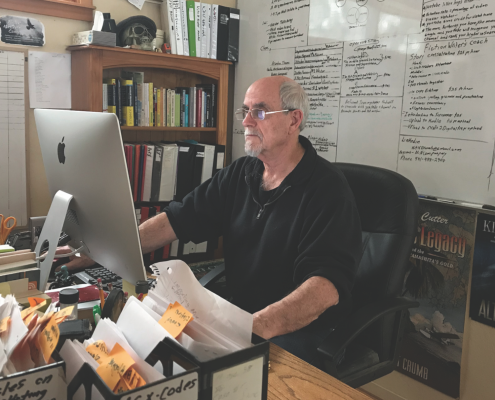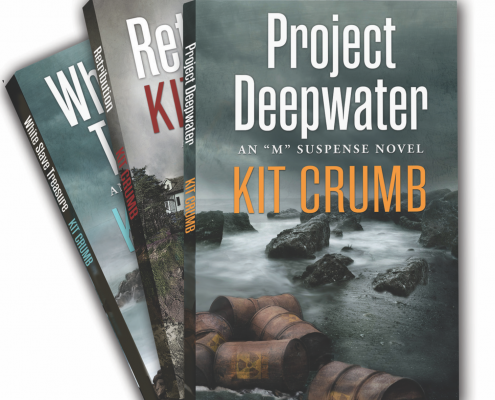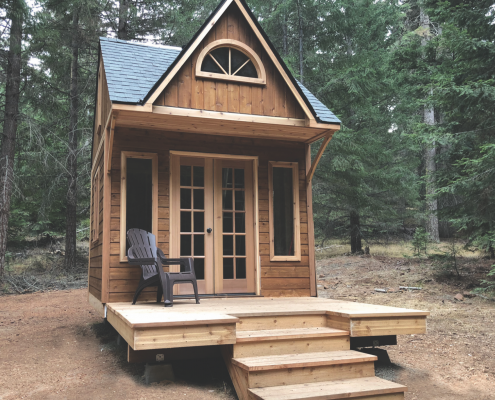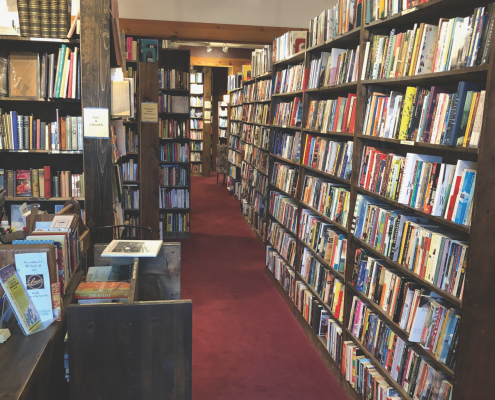Sharing a Passion for Writing Fiction – Kit Crumb Fiction Writer’s Coach
Long-time Ashland resident and fiction writer Kit Crumb loves his work. Having written over twenty books across five genres, Kit enjoys sharing his passion with aspiring writers. Kit is also a life-long martial arts practitioner and former physical therapist and entrepreneur. In today’s interview I caught up with Kit to learn more about his craft and passion for writing.
Hi Kit, thanks for taking the time to speak with me today. Let’s jump right into this. Where did you get your passion for writing?
I was a storyteller as a kid, but it wasn’t until my senior year in high school, and a creative writing class that I caught the writing bug. My teacher was a published author who told me I should be writing poetry. For a while I wrote Japanese Waka and then Haiku. I eventually put together a book I called it Haiku Sandwich. But something inside me was trying to get out, something I couldn’t express in poems. My passion was for action and adventure and this led me to the kind of stories I write today.
You have several genres and settings you like to write about. Please tell us about this.
Settings and genre are all part of knowing your story. My settings are for the most part in the Pacific Northwest. One of my favorite creations is the Oregon coastal town of Dungeness Bay. I built it around my private investigator series “M”. Although I have a few stand-alone stories I enjoy writing a series. I have a medical thriller series about a husband and wife team who operate an ambulance service in the Rogue Valley, then there is Billy Sloan, a female reporter that works for the tabloid “Urban Legend”, and a detective duo in the series Ghost Detectives. My latest series is The Witch Hunter about a writer who learns that witches are real and among us.
Where do you get the inspiration for the stories that you tell?
The question I’m asked most often is where do I get ideas for my stories. The simple answer is, everywhere. The writer needs to have their “situational awareness” engaged at all times. An idea might come from something as simple as an image or an observed encounter, an article, book, movie, personal challenge…. ideas are everywhere.
 Kit you are writing up to 1000 words an hour …wow! Please say more.
Kit you are writing up to 1000 words an hour …wow! Please say more.
What I teach through my Olli courses and various groups is that word count allows you set goals and remove stress from the writing process. If you have a rough idea of the number of words you can write in an hour then there is no recrimination, “I should have written more.” Really, 1000 words an hour is my peak. If I’m writing dialogue, or creating a complex scene, the word count per hour drops. There’s the false notion that fast writing can’t be quality writing, yet Robert Louis Stevenson wrote Dr. Jekell and Mr. Hyde in six weeks, Hemingway was a fast writer, as was F. Scott Fitzgerald.
How do you continue to push the limits on what you can write?
A writer grows through writing. I used to write in third person. So I tried first person, with a few false starts I came up with my Urban Legend series, all in first person. My books were 250 to 350 pages so I challenged myself and created a 2-hour mystery series which consists of novellas. The challenge there was to retain the hook, middle and exciting end in 80 pages.
Where does your real life come into play in your storytelling?
I work my likes and dislikes into most stories. I’ve ridden motorcycles since my late teens, almost as long as I’ve practiced the martial arts so these activities are easy to work into my books. Nearly 40 years ago I was an EMT and this informs my medical thrillers.
Do your stories ever become so real that they kind of freak you out as to where you can go in your imagination?
The backbone of any fiction story is research. Imagination can take you a long way, but research teaches that truth is, indeed, stranger than fiction. I can’t count the number of times I thought I had a wild and crazy idea that couldn’t possibly be true, yet my research revealed the idea was in play and a reality —and that’s spooky.
Talk more about why this is really a golden time for writers.
Wow, Shields, you’re going to drive up on my soapbox with this one. Simply said: Today’s writer has, perhaps for the first time, the choice of taking full control of their book: content, cover, back blurb and marketing, even editing to some extent, or they can try to interest a traditional publisher who will make changes as they see fit. I like choice. Charles Dickens made a choice with A Christmas Carol. When his publishers didn’t like the book, and didn’t think it would sell, he chose to publish it himself. He believed in his story and we all know how that turned out.
Kit what are some of the habits and rituals that you have created to support you as a writer?
I write everyday. I sit at the same place at roughly the same time, morning, noon, and night. I set word and page goals that are attainable. With each word, page and story I write, I strive to strengthen my skills as a fiction writer – to get better at telling a story. From Stephen King to Robert B. Parker all writers have a favorite time and place to write.
Does your body ever get tired for sitting so long?
I can’t stress enough the importance of getting up and moving around at least hourly. The position one sits in when writing should be ergonomic. Eye stress, carpel tunnel syndrome, and cramps in the legs are all risks the writer needs to consider.
You say that writing is actually the easiest part of creating a book. Please say more.
The writer has the ability to make the craft of fiction writing both challenging and enjoyable. After three or four books or more it becomes predictable. However things like the marketing process, how you make your book available, are dynamic and ever-changing. The days of handing your book over to a traditional publisher who will do all the marketing are over. During the last recession we saw many large publishers change hands, and mid-range publishers go out of business because they couldn’t predict the market. Writers need to be wave-warriors— riding the waves of change that leads to greater sales.
Kit thanks for sharing all this experience and knowledge. I imagine this is just a prelude to the coaching that you offer to your clients?
For 2019, beginning in February I’m offering a free weekly class for beginning fiction writers with no strings attached. Bring your manuscript, finished or not. The only requirement is that you’re excited about your story and motivated to have it published. I’m limiting class size to six. First-come first-served, so to speak. The first six people to contact me at kitkcrumb@gmail.com will constitute the class, and where else would I hold a class on fiction writing than in a used bookstore. A big shout out of thanks to The Book Exchange for providing space for what will be a great learning experience.
Tell us a little bit more about the services you offer.
Shields, I’m a big believer that the beginning fiction writer should not be charged the same rate for coaching, editing, and cover as the writer who has three or more books under her belt. That said, as the fiction writer’s coach I cater to the beginning fiction writer and provide modified rates below standard market fees and costs. I help the beginner establish a strong writing skill set. I provide story consultation, an introduction to the preferred writer’s software, for both writing and editing.
Can you give us an idea of some frequently asked questions fellow writers pose to you?
How long should my title be? A: Three to five words max. How long should my book be? Answer: As long as it takes to tell your story. Novel, novella, or short story, it’s all good. First or third person, genre or series—the questions go on and on and on. I would have to say that finding the answers to seemingly puzzling questions has never been easier. The answer is research.
Kit how do you get in the “zone” and stay in the “zone” when you get ready to write?
The truth, I’m always ready to write. I don’t wait for a mood or muse. I’m in the zone when I’m shopping and I see a woman that looks like a spy, or a witch or a presidential candidate. I’m in the zone when I’m out for a walk or driving in town. Kind of like PigPen in the old Peanuts comic strip, he always has a cloud around him. I feel I’m always in the zone. But when I sit in my writer’s chair at my writer’s desk with a story to tell that’s when I’m really in the zone.
Many times you write multiple stories at one time. How is that possible?
I always have three stories going. One is my favorite that I’m actually writing on. If I hit a wall, I shift gears and move to the second in line, this keeps the creative juices flowing. When I finish with that one I may move onto my third choice or go back to the first one. Initially the two in the basket usually consist of about fifty thousand words each followed with what I call concept lines. This process gets rid of writer’s block.
 Most writers want to see their book in a major book store and this is not the situation anymore. How has the world changed?
Most writers want to see their book in a major book store and this is not the situation anymore. How has the world changed?
Back in the day, about ten years ago, a writer would write a book and sell it to a traditional publisher that would build their audience. The assumption was that the traditional publisher was much better at finding an audience than the writer. Indeed, that assumption was true back then. Once in paper and on a bookshelf, books got discovered through bookstores. Then e-readers hit, along with the easy Amazon publishing platform, quickly mimicked by Barnes & Noble, then Canada’s Kobo and now a book doesn’t have to be in paper to find readers. Now lots of writers are reaching lots of readers, worldwide, without ever producing a printed book of their latest novel. Then there is a matter of money. Without an agent, and publishing house taking their share out of your royalty, you get more. Or course that means that the writer does all the work. I tell new writers that when they’re writing, the story is their baby, and when finished it becomes the product.
Do you have any specific recommendations for pacing hooks and cliffhangers?
For pacing, get rid of waste words that weaken the narrative, for example: without, some, very, of, eyes, started, with, and as, to name a few. Tighten everything up, from dialogue to action. The reader has a great imagination and will make connections easily. Everyone knows that a strong hook in the front of the book, the first line, paragraph or page will get the reader interested. But don’t stop there. There is nothing worse than reading a great opening hook and the rest of the story drags. In fiction every chapter should begin with a hook and end with a cliffhanger—and that is called a page-turner.
Kit you also have audio books and your very own podcast. Please say more.
As of this writing, audio books are outselling both print and ebooks. I urge the new writer to have her book narrated (audio) as well as an ebook and POD (print on demand). That means that the one book she just finished is now three, or on three platforms. One of the marketing tips that I’ll cover, in the free class that I mentioned earlier in this interview, is how to have your finished manuscript narrated with no out-of-pocket cost. I write three short stories a week Monday Wednesday, and Friday that I broadcast through my podcast. To date I have over thirteen thousand listeners and growing in every state and across 35 countries. This is part of my marketing strategy, plus it keeps me writing.
Kit, who have been some of your favorite authors to read, and why?
I have dozens of books on my bookshelves that I’ve only read bits of. The reason is that if I really want to know how to handle a certain situation, create suspense, or action I go to those authors and flip through the pages until I find a an example of what I’m looking for. Generally I read the genre I write – basically, action, fiction and life on the edge with medical thrillers and supernatural thrown in. For fun I might read Rob MacGregor, he writes action, like Indiana Jones stuff. For suspense there are two sisters that write under P.J. Parrish. For the Private Investigator series I read Amanda Kyle Williams, and Sue Grafton. For a gentle touch of the supernatural I read Kat Richardson, and Marlys Millhiser. I advise the beginning writer of fiction to read the genre they write in, and read everyday. That’s why the free class I mentioned earlier in this interview is being held at the Book Exchange. Why talk books in a sterile auditorium?
In your own stories you have mentioned you know them inside and out before you start writing. How does this work?
I write series for the most part and so know the stories well. Take the case of Stevie Cutter and the Search for Yamashita’s Gold. It started as a stand-alone based loosely on the 1983 TV series, Tales of the Gold Monkey. I knew that there was a Japanese general who, during World War II, buried treasure vaults on islands all across the Pacific. Somewhere along the line I decided to include the mystery of the “Hawaii Clipper” that vanished over the Pacific in the late 1930’s. Bingo! I had the major aspects of the story. The story was complex and I created a step-sheet to keep track of events, and people. So you can see that before I’d written one word of the story I knew it inside and out.
What is writing into the dark and how does this work?
Writing into the dark is a phrase used by the author of over 600 books, Dean Wesley Smith who describes it as writing with only the bare bones of a story idea. With no knowledge of where the story will go—no outline, step-sheet, or mind map.
Kit, thanks so much for taking this time today. Are there any last thoughts or comments you would like to share with our readers?
I’d just like to remind the readers that if they’d like to be part of the free ongoing class I’m offering to beginner fiction writers in February they should contact me.
Learn More:
Fiction Writer’s Coach
415 Williamson way # 7
www.kitkcrumb.com and www.fictionwriterscoach.com
(541) 488-8431

